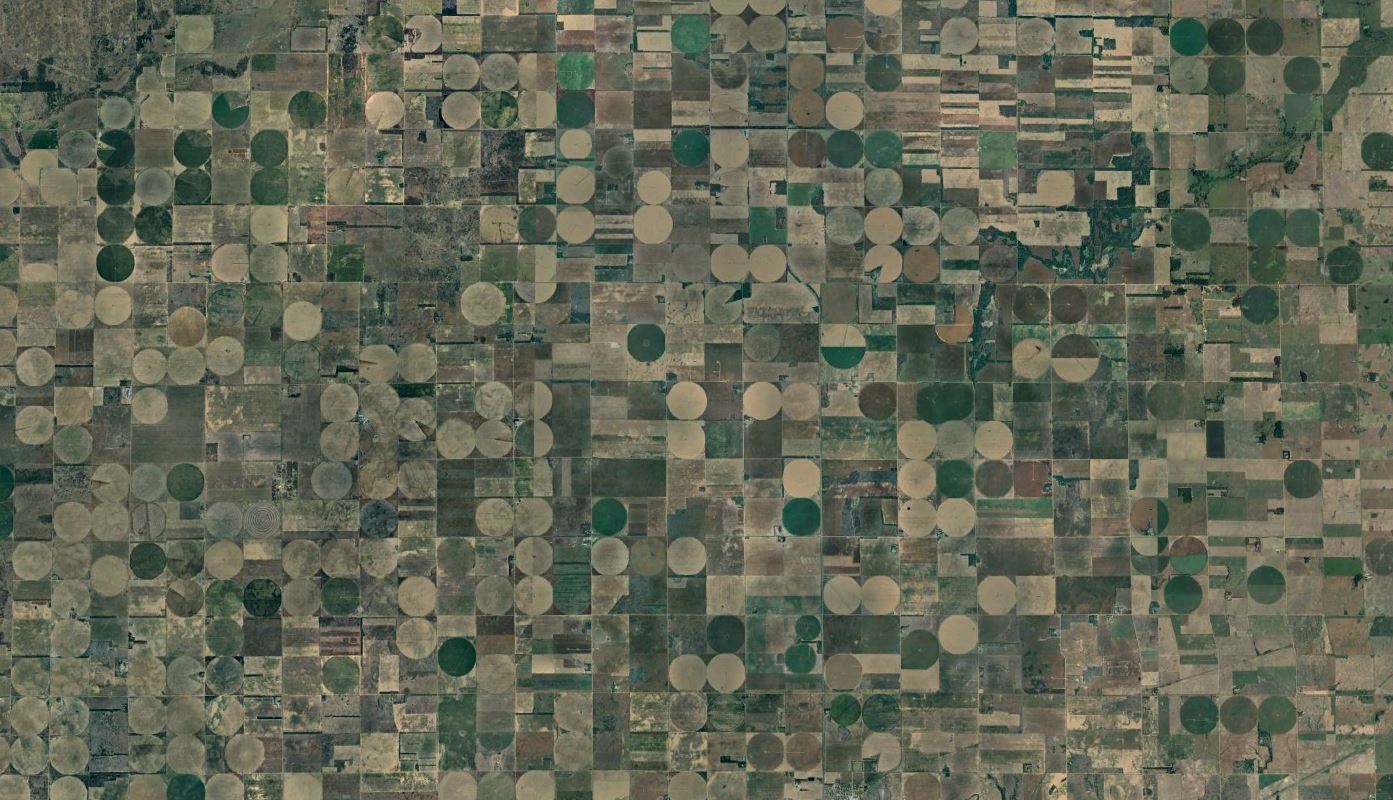Aquifer Under Siege: Mapping the Nexus of Agriculture, Economics, and Water Conflict in Kansas
Introduction
Water scarcity and its management in today’s time has become central to understanding the balance and future of urbanization, rural development and water- particularly in regions heavily reliant on agriculture. The conflict over groundwater in Kansas can be immediately related to the “hydraulic society” thesis (Wittfogel, 1957), where control over water resources is the crux on which power dynamics, social relations, and economic activities revolve. Wittfogel’s theory, often referred to as “hydraulic civilization” theory, says that societies developing in arid regions will naturally evolve complex administrative and governance structures to manage water resources effectively. This theory emphasizes the central role of water control in societal development and the potential for conflict over water resources as a fundamental aspect of societal power dynamics.
The Story of the largest Aquifer in the United States of America
An aquifer is an underground layer of permeable or “leaky” rock. The mixture of sediment and rock in these layers contains many holes of different sizes that are able to store a massive amount of water. The Ogallala Aquifer is one of the world’s largest fresh groundwater resources. It underlies 175,000 square miles in eight states. Starting as hundreds of feet of silt, clay, and gravel eroded from the Rocky Mountains and laid down by streams millions of years ago, rainfall during this time produced an underground lake.
The Aquifer ies beneath portions of, including Texas, New Mexico, Kansas, Oklahoma, Colorado, Nebraska, Wyoming and South Dakota. The Ogallala has been the source of substantial, large-scale irrigation development, beginning in the 1950s, when affordable technology became available for extracting groundwater and applying it to large fields of cotton, corn, winter wheat, and sorghum.
Why Kansas?
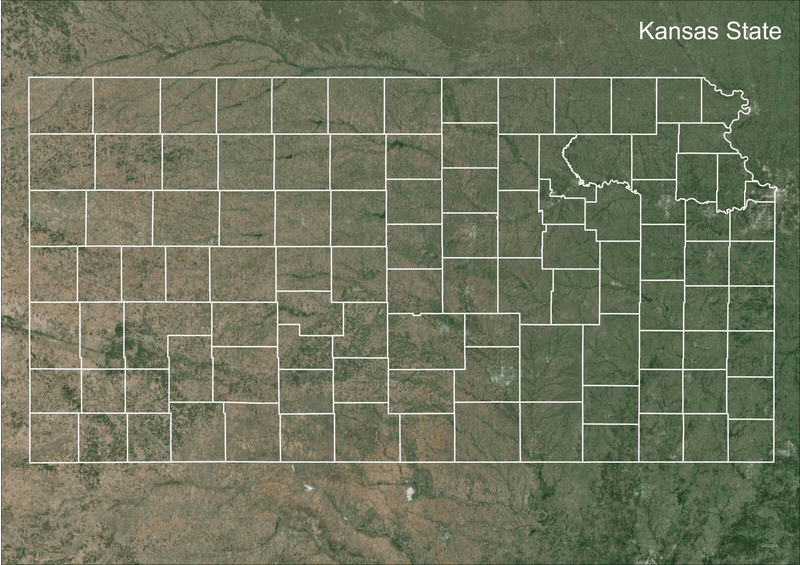
Kansans rely on ground water for 85% of their water needs, including municipal, industrial, agricultural, and rural domestic water supplies. In fact, Kansas relies on ground water to supply a higher percentage of its water needs than almost any other state in the U.S. Eastern and western Kansas differ dramatically in their reliance on ground water. In the western two-thirds of the state, where precipitation amounts are usually small, relatively abundant ground-water due to the Ogallala Aquifer provides most of the water.
Agriculture in Kansas
Agriculture has been a significant part of Kansas’ economy since it was settled by European Americans in the mid-19th century. The Homestead Act of 1862 encouraged this settlement by offering land for farming. Over the decades, agricultural practices evolved with technological advancements in farming equipment and methods, significantly boosting the state’s agricultural output. Agriculture contributes significantly to Kansas’s GDP, making water usage a critical economic issue. Agriculture directly contributes billions to Kansas’s Gross State Product (GSP). According to the Kansas Department of Agriculture, the agriculture and food sector contributes about $67.5 billion annually to the Kansas economy and supports over 247,000 jobs.
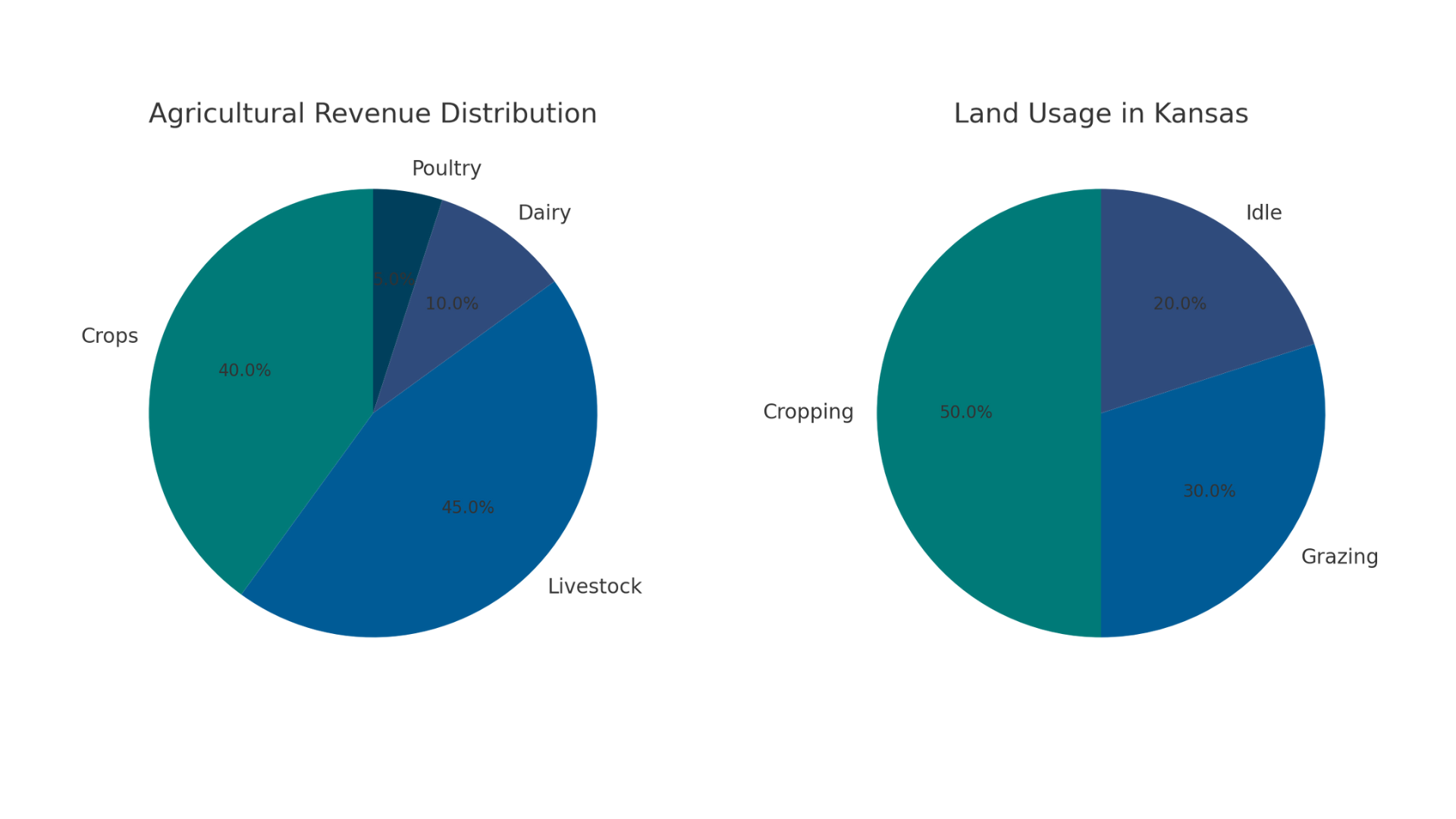
Water Wells and the Aquifer
Water wells tapping into the Ogallala Aquifer are for agricultural irrigation, which accounts for around 85% of the water use from the aquifer in the state. They are often deeper and have a higher capacity to pump large volumes of water to support extensive agricultural activities. The ability to irrigate has allowed Kansas farmers to achieve higher yields and grow crops more consistently, even during periods of low rainfall.Over the decades, intensive water extraction for irrigation has led to substantial declines in water levels in parts of the aquifer. Some areas have experienced drops of over 150 feet.

The High Plains Aquifer is depleting at a rate that current practices cannot sustain. The aquifer regains a mere half an inch per year currently. Current predictions state that if the depletion rate remains constant the Aquifer will be 2/3rd diminished in the next 50-75 years
Water Depletion
Water depletion is a measure of the fraction of available renewable water consumptively used by human activities within a watershed. Calculations from WaterGAP3 (Brauman, KD et al, 2016) was used to assess long-term average annual consumed fraction of renewably available water, then integrates seasonal depletion and dry-year depletion, also based on WaterGAP3 calculations, with average annual depletion. There are 8 water depletion categories: <5% depleted, 5-25% depleted, 25-50% depleted, 50-75% depleted, dry-year depleted, seasonally depleted, 75-100% depleted, and >100% depleted.
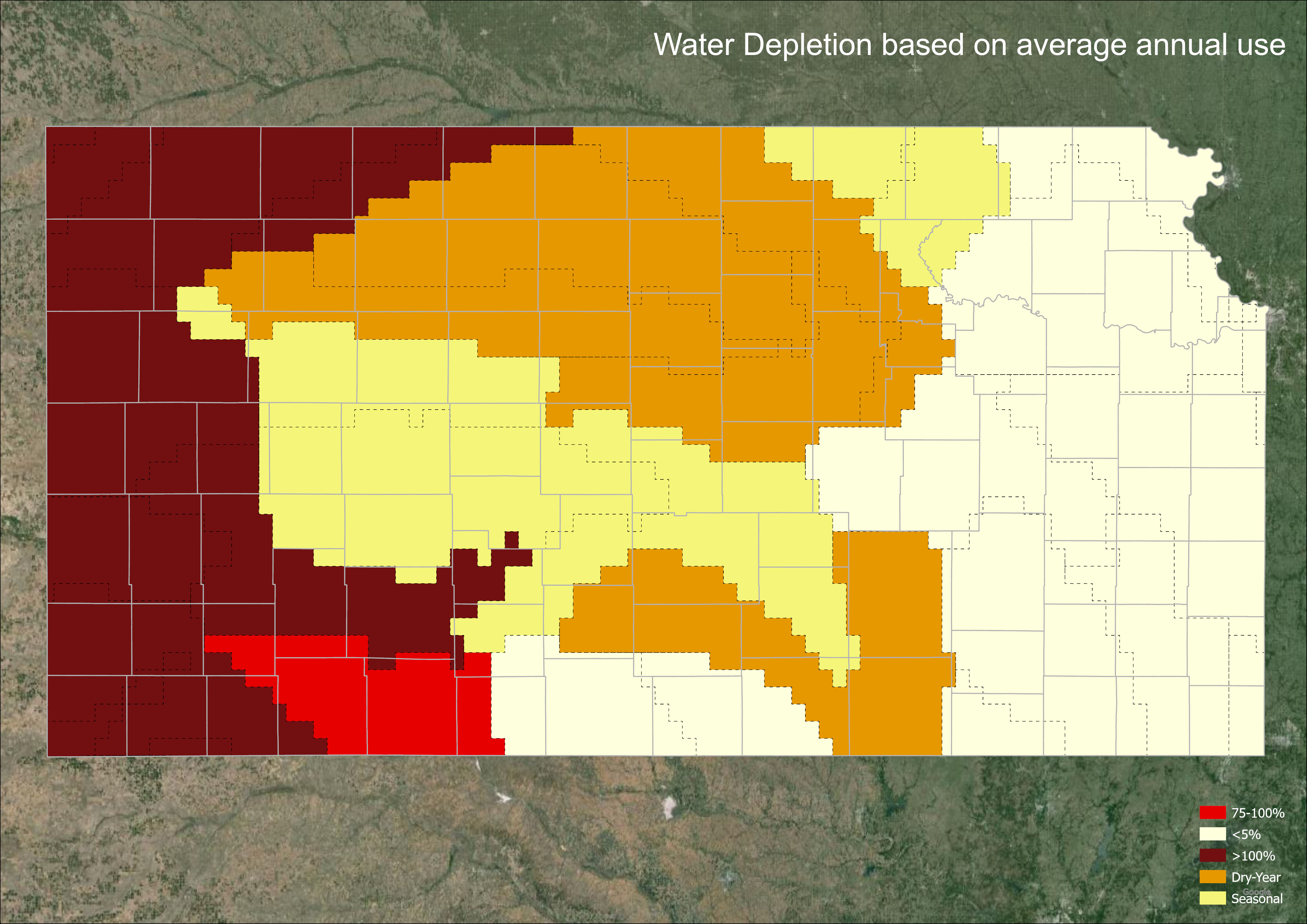
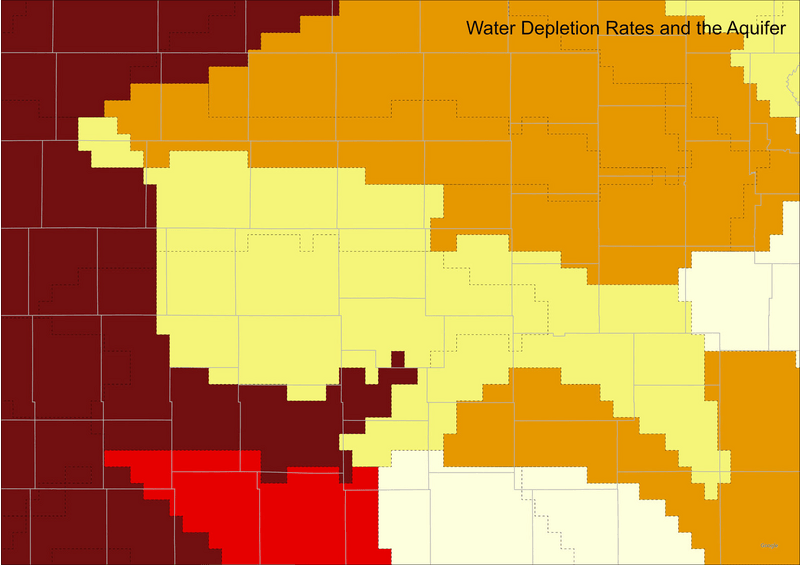
Depletion is a structural problem embedded in agricultural policies. Groundwater depletion is a policy choice made by federal, state and local officials.
Relationship between Agriculture and Water Stress
The economic pressure to maximize agricultural yields has led to the intensification of farming practices in Kansas. High-value, water-intensive crops demand significant groundwater withdrawal. Advances in irrigation technology, often driven by private investment, have enabled farmers to extract groundwater more efficiently. While such technologies can lead to more precise water use, they also facilitate the expansion of irrigated acreage and can increase the total volume of water extracted from the aquifer. The economic benefits of expanding irrigation, including increased land values and crop yields, can incentivize over-extraction.
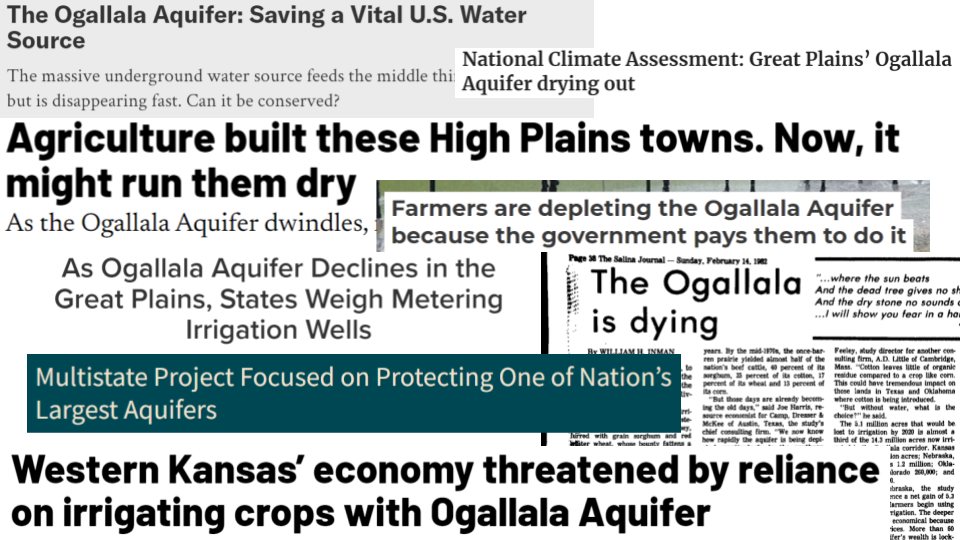
The relationship between water-intensive crops and those most commonly grown highlights the stress on water resources.
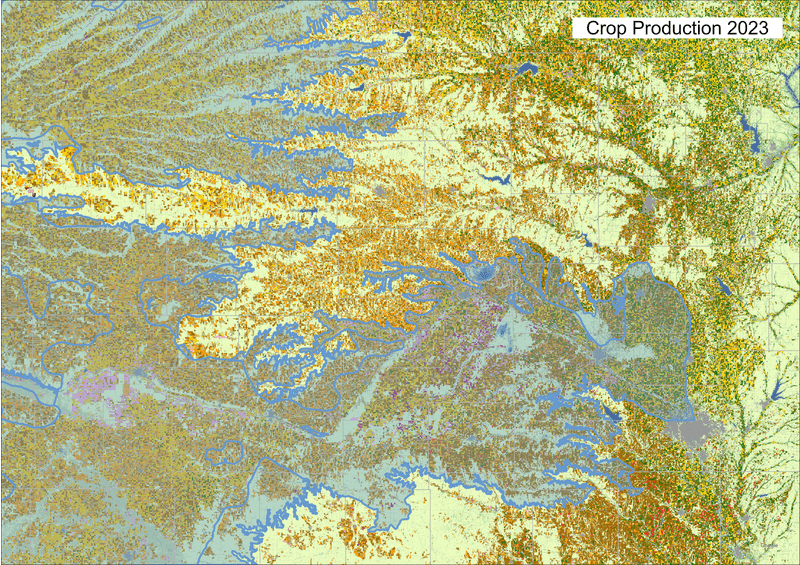
Why Corn?
Corn is a highly profitable crop, especially when market conditions are favorable. Kansas has a large livestock industry, including cattle feeding, which is one of the largest sectors in the state’s agricultural economy. Corn is a primary component of livestock feed, particularly for cattle. The proximity of corn fields to feedlots reduces transportation costs and supports the economic efficiency of livestock production. Corn is also used to produce ethanol, a biofuel that has become an important part of the energy sector. Kansas has several ethanol production facilities, and the demand for biofuel has increased the cultivation of corn specifically for this purpose. Federal farm policies, including subsidies and insurance programs, often support corn production, making it a less risky crop for farmers.
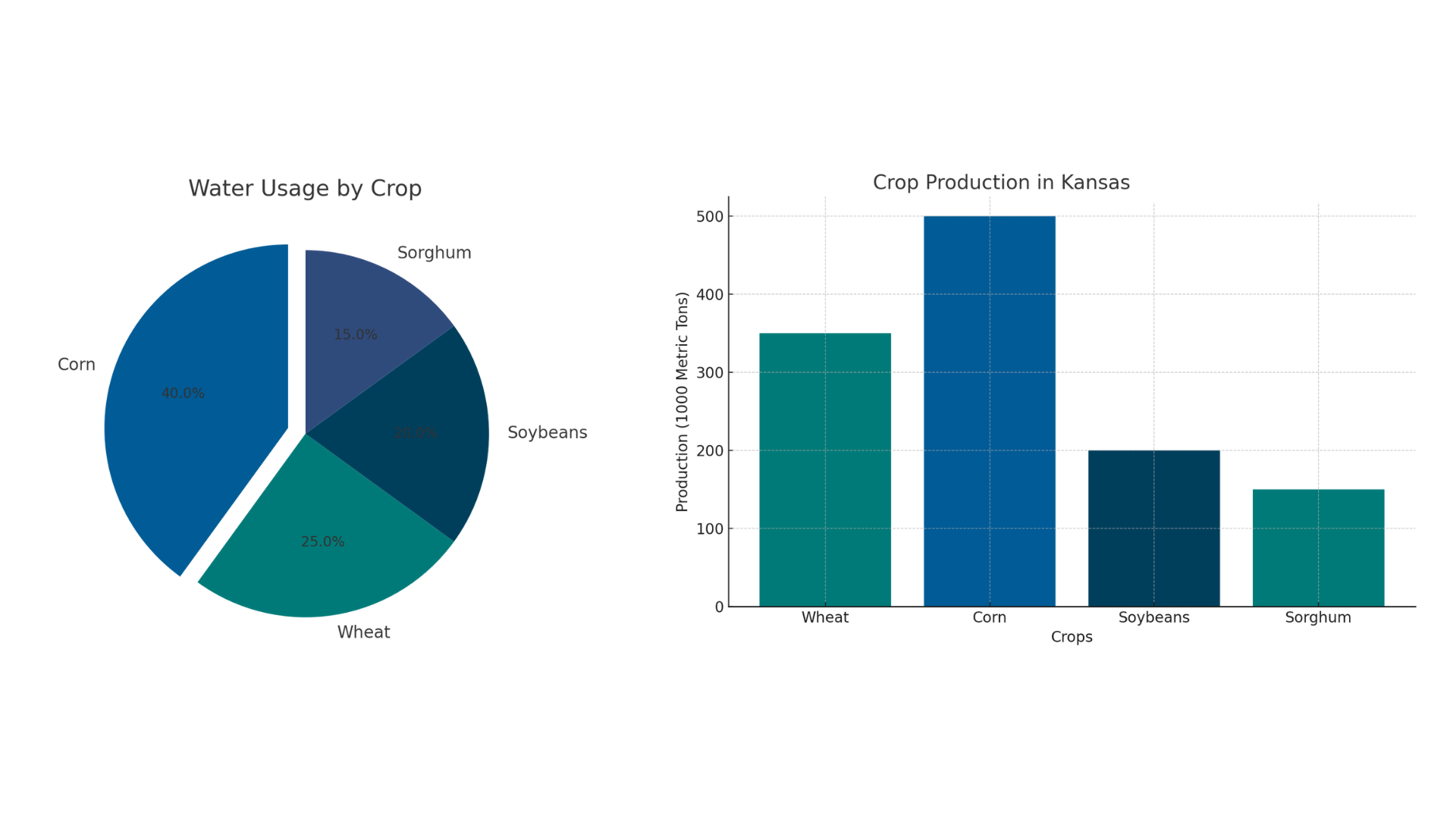

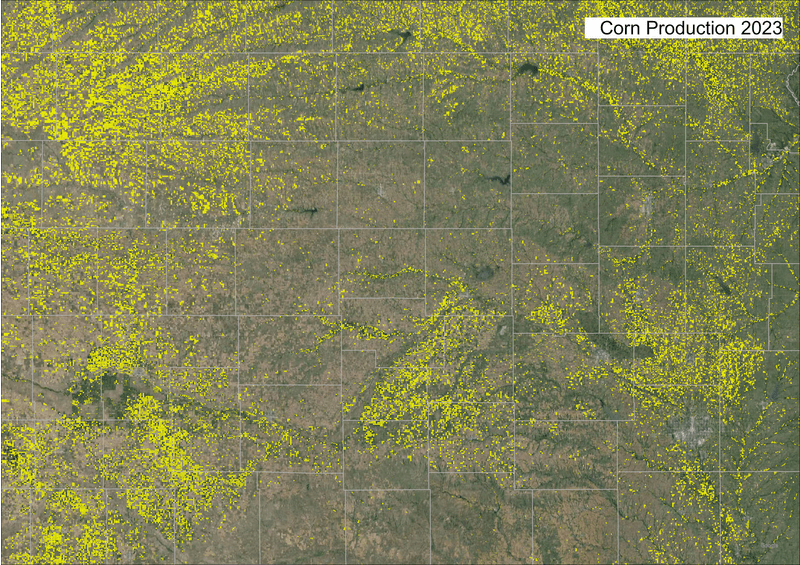
Corn is a water-intensive crop, especially during its mid-growth stage. It requires significant amounts of water to achieve optimal growth and yields.
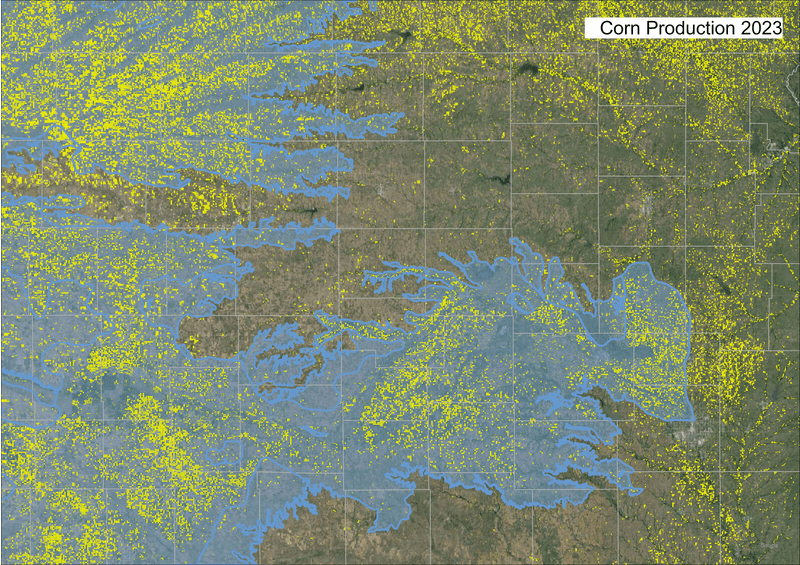
Conclusion
The challenges facing the Ogallala Aquifer in Kansas, stemming from agricultural demands, urban expansion, and economic development, underscore a critical junction in water resource management. The nexus of agriculture, urbanization, and water conflict reveals a multifaceted dilemma requiring comprehensive and innovative solutions.
References
Lanning-Rush, J. (2016). Irrigation water use in Kansas, 2013. U.S. Geological Survey. https://pubs.usgs.gov/publication/ds981
USDA, NASS. (2020). 2020 Kansas Cropland Data Layer. https://www.nass.usda.gov
USDA, NASS. (n.d.). Research and Science - Cropland Data Layers. https://www.nass.usda.gov/Research_and_Science/Cropland/SARS1a.php
USGS. (n.d.). Water Use Data for Kansas. https://waterdata.usgs.gov/ks/nwis/wu
USGS. (2018). Water-use data available from USGS. https://water.usgs.gov/watuse/data/
Kansas Department of Agriculture, Division of Water Resources. (n.d.). https://agriculture.ks.gov/divisions-programs/dwr
Harvey, D. (1996). Justice, nature and the geography of difference. Blackwell.
Ostrom, E. (1990). Governing the commons: The evolution of institutions for collective action.
Sassen, S. (2014). Expulsions: Brutality and complexity in the global economy..
Swyngedouw, E. (2004). Social power and the urbanization of water: Flows of power.
Wittfogel, K. A. (1957). Oriental despotism: A comparative study of total power.
Bakker, K. (2010). Privatizing water: Governance failure and the world’s urban water crisis.
Brauman, KA, BD Richter, S Postel, M Malby, M Flörke. (2016) “Water Depletion: An improved metric for incorporating seasonal and dry-year water scarcity into water risk assessments.” Elementa: Science of the Anthropocene. http://doi.org/10.12952/journal.elementa.000083
